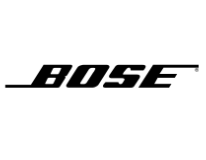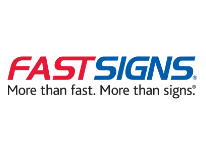Safety First: Essential CNC Router Safety Features
In today’s industrial and workshop environments, CNC routers have become valuable tools, revolutionizing how materials are cut, shaped, and engraved. These versatile machines, ranging from small CNC routing machines to powerful industrial CNC routers, are used in various industries, including woodworking, sign-making, and metal fabrication.
As these machines continue to advance in capability and complexity, the importance of safety in CNC router operations cannot be overstated.
Ensuring the safety of operators while maintaining the smooth operation of CNC routers is crucial. This involves integrating essential safety features, such as emergency stop buttons, protective guards, and dust collection systems, into the CNC router setup. Without these safeguards, the risk of accidents and equipment damage increases significantly, which can lead to costly downtime and potential harm to personnel.
In the following sections, CAMaster will explore the key safety features that every CNC router should have to protect operators. These measures will also ensure efficient, uninterrupted operation. By understanding and implementing these features, workshops, and industries can maintain a safe working environment while maximizing the productivity of their CNC machines.
Understanding CNC Router Safety Risks
Mechanical Risks
CNC routers have powerful moving parts and high-speed cutting tools, both of which can pose significant dangers. Accidental contact with these components can lead to severe injuries, including cuts, amputations, or even more serious outcomes.
Mechanical failures, such as a malfunctioning spindle or loose parts, can also result in catastrophic accidents, causing damage to both the machine and the operator. That is why proper maintenance and adherence to operational guidelines are crucial in mitigating these risks.
Electrical Risks
Electrical hazards are a significant concern when working with CNC routers. Faulty wiring, improper grounding, or power surges can lead to electrical shocks, fires, or even explosions, putting both equipment and personnel at risk.
These hazards underscore the importance of ensuring that all electrical systems are correctly installed, regularly inspected and maintained. Compliance with electrical safety standards is not just a legal requirement but a vital aspect of protecting both equipment and operators from potential electrical dangers.
Human Factors
Human error is a leading cause of accidents in CNC router operations. Factors such as operator fatigue, distraction, or inadequate training can lead to mistakes that may result in serious injuries or equipment damage.
The role of ergonomic design in preventing such incidents cannot be overstated. By reducing physical strain and making sure that controls are easily accessible, ergonomic designs help minimize the likelihood of operator error.
Additionally, comprehensive training programs are essential to equip operators with the knowledge and skills needed to work safely and efficiently.
Key CNC Router Safety Features
Emergency Stop Button
The emergency stop button is a vital safety feature that can prevent serious accidents. Its primary function is to immediately halt the CNC router’s operation in case of an emergency, reducing the risk of injury or damage. This button must be easily accessible to the operator, allowing for quick action when needed.
Ideal placement locations for the emergency stop button include the front and side panels of the CNC router. These positions ensure that the operator can reach the button quickly from different angles. In larger setups, additional stop buttons may be installed around the workshop for enhanced safety.
The functionality of the emergency stop mechanism is straightforward yet highly effective. When pressed, it cuts power to the machine, bringing all operations to an immediate stop. This feature is particularly effective in scenarios where the operator detects a malfunction, a tool breakage, or any other unsafe condition.
Enclosures and Guards
Enclosures and guards act as physical barriers, preventing operators from coming into contact with moving parts. These protective measures are essential for minimizing the risk of injury from flying debris or accidental contact with the router’s cutting tools.
Transparent guards offer a dual benefit: they provide protection while allowing the operator to monitor the machining process. This visibility is crucial for ensuring that the operation proceeds as planned without compromising safety.
Interlocking mechanisms are another critical aspect of CNC router safety. These mechanisms are designed to automatically stop the machine if a guard or enclosure is opened during operation. This feature prevents the machine from running when the protective barriers are compromised, enhancing overall safety.
Dust Collection and Filtration Systems
Fine dust particles generated during CNC router operations pose significant health risks. Inhalation of these particles can lead to respiratory issues and other health problems. Additionally, dust accumulation can impair machine performance, leading to malfunctions and potential safety hazards.
Dust collection systems are crucial for maintaining a clean and safe workspace. These systems effectively capture and remove dust from the air, reducing the risk of inhalation and keeping the CNC router in optimal condition. A well-maintained dust collection system not only protects the operator’s health but also prolongs the life of the machine.
Filtration standards are equally important in ensuring that dust collection systems are effective. High-efficiency particulate air (HEPA) filters, for example, meet industry safety standards by trapping fine particles, preventing them from recirculating into the air. Choosing the right filters is essential for achieving a safe and compliant working environment.
Power Interlock Systems
Power interlock systems are designed to prevent accidental startups, which can occur after power interruptions. These systems ensure that the CNC router does not resume operation until the operator has manually reset the machine, preventing unintended activation that could lead to accidents.
These interlock systems work in conjunction with other safety features, such as emergency stop buttons and guards, to create a comprehensive safety protocol. By requiring deliberate action to restart the machine, power interlocks reduce the likelihood of operator error and enhance overall safety.
Software Safety Features
Advanced software plays a crucial role in CNC router safety. Collision detection systems, for instance, use predictive algorithms to prevent the router from colliding with fixtures or other parts of the machine. This feature not only protects the machine but also prevents damage to the workpiece.
User access controls are another important software safety feature. These controls restrict machine operation to authorized personnel only, reducing the risk of accidents caused by inexperienced or untrained users. By limiting access, these controls help maintain a safe and controlled working environment.
Remote monitoring systems offer real-time alerts to operators, providing immediate warnings of potential safety issues. This capability allows for prompt action to address problems before they escalate, further enhancing the safety of CNC router operations.
Implementing Safety Best Practices
Routine Safety Inspections
Regular safety inspections are crucial for maintaining a safe CNC router operation, whether in small workshops or large industrial settings. These inspections help identify and address potential issues before they lead to accidents or equipment damage. By conducting routine checks, operators can ensure that their CNC routers are functioning properly and safely.
A basic safety checklist should be followed before starting any CNC router. This checklist might include verifying that all guards and enclosures are securely in place, checking that the emergency stop button is functioning, ensuring proper grounding and electrical connections, and confirming that the dust collection system is operational. By adhering to this routine, operators can minimize risks and maintain the performance of their CNC machines.
Operator Training and Certification
Proper training and certification are essential for all CNC router operators, regardless of their experience level. Training programs should cover not only the operation of the CNC router but also the importance of safety features, such as power interlock systems and emergency stop buttons.
This training is critical for the safe handling of CNC routers, whether it’s a CNC wood-cutting machine or a laser engraving machine.
Continuous education is also vital. As CNC technology evolves, so do the safety protocols and features associated with it. Regular updates and refresher courses can keep operators informed about the latest best practices, ensuring they remain competent and confident in their roles.
Safety Culture in the Workshop
Promoting a safety-first culture within the workshop is the responsibility of management. This culture should prioritize the well-being of operators by emphasizing the importance of safety in every aspect of CNC router operations.
Encouraging the use of safety features like enclosures, guards, and American-made CNC routers with built-in safety mechanisms is a key part of this culture.
Implementing a reporting system that allows operators to voice safety concerns without fear of retribution is also crucial. Such systems empower operators to take an active role in maintaining a safe working environment, ultimately leading to more effective and consistent safety practices across the workshop.
Cost-Effective Safety Upgrades
Affordable Safety Enhancements
Investing in affordable safety upgrades is a practical way to improve the protection of operators and the efficiency of most top CNC routers without breaking the bank. Simple yet effective enhancements, such as adding additional guards or upgrading emergency stop systems, can significantly reduce the risk of accidents.
For example, installing transparent guards on a CNC routing machine allows operators to monitor the process while staying protected from moving parts.
The long-term benefits of these upgrades far outweigh the initial costs. Not only do they prevent costly accidents and downtime, but they also contribute to a safer working environment, which can boost employee morale and productivity.
By ensuring that your CNC routers are equipped with the latest safety features, you can achieve a higher return on investment (ROI) through increased machine uptime and reduced liability.
Working with Safety Consultants
Consulting with safety experts can be invaluable when identifying and implementing necessary safety upgrades. These professionals bring specialized knowledge that can help you choose the most effective and cost-efficient safety features for your specific CNC routers.
The cost vs. benefit analysis of these consultations often reveals that the right safety enhancements can dramatically reduce the risk of expensive accidents and prolonged downtime.
By working with experts, you can ensure that your CNC router operations remain safe and compliant, ultimately protecting your investment and your workforce.
Overcoming Common Safety Challenges
Dealing with Older Equipment
Older CNC routers can pose significant safety risks, but retrofitting them with modern safety features is a practical solution. Adding new guards, upgrading emergency stop buttons, or installing power interlock systems can enhance the safety of these machines.
For example, retrofitting a CNC wood-cutting machine with updated safety features can bring it closer to the standards of the best CNC routers.
Balancing cost and safety is crucial when upgrading older equipment. It’s important to prioritize safety features that offer the most protection within budget constraints. Investing in essential upgrades can prevent accidents and extend the life of your CNC routing machines, ensuring they remain both safe and productive.
Managing Resistance to Change
Introducing new safety protocols or equipment can sometimes meet with resistance. Encouraging buy-in from operators can be achieved through clear communication about the benefits of these changes. Offering incentives for compliance, such as recognition or rewards, can further motivate staff to embrace new safety measures, ensuring a safer work environment for everyone.
Conclusion
Ensuring CNC router safety is essential for protecting operators and maintaining efficient operations. Key features like emergency stop buttons, enclosures, and modern safety upgrades are critical in minimizing risks. By retrofitting older equipment and encouraging compliance with safety protocols, workshops can create a safer working environment.
Taking proactive steps to enhance CNC router safety is not just a legal obligation but a smart investment in long-term success. Prioritizing safety features ensures smooth operations, reduces downtime, and safeguards both your equipment and workforce. Ultimately, it leads to sustained productivity and growth.
Ready to prioritize safety in your CNC router operations? Explore our CNC machines for sale! CAMaster offers reliable, top-rated CNC routers to meet your safety and operational needs.
Discover the benefits of enhancing your workshop with a USA-made CNC router from CAMaster. Our machines are built with safety and efficiency in mind, ensuring your business stays ahead of the competition.
Interested in improving safety? Call 770-334-2448 today to learn more and request a quote!
Want to upgrade your CNC workflow?
Discover our industrial-grade CNC solutions tailored to your needs. Learn more →















